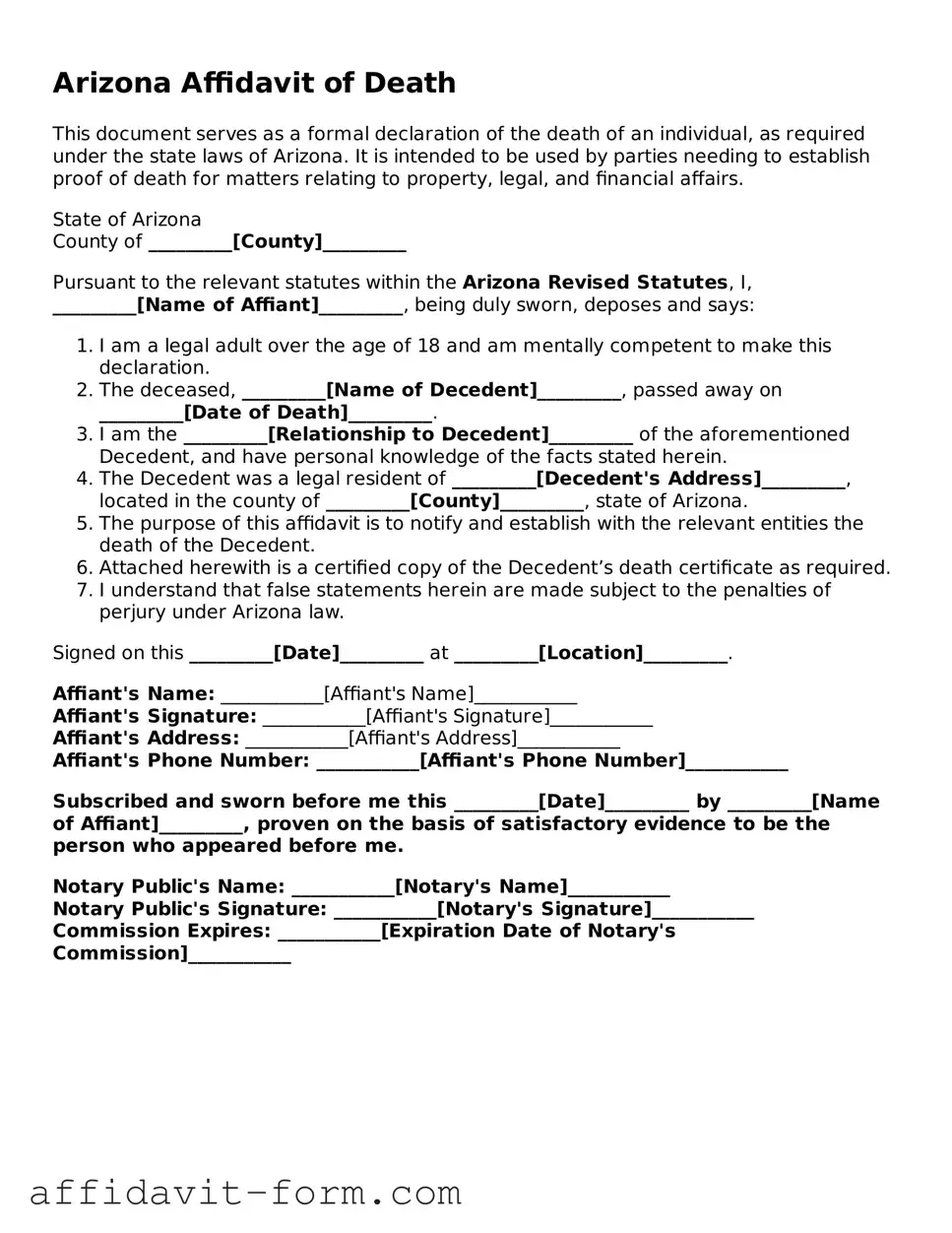Arizona Affidavit of Death
This document serves as a formal declaration of the death of an individual, as required under the state laws of Arizona. It is intended to be used by parties needing to establish proof of death for matters relating to property, legal, and financial affairs.
State of Arizona
County of _________[County]_________
Pursuant to the relevant statutes within the Arizona Revised Statutes, I, _________[Name of Affiant]_________, being duly sworn, deposes and says:
- I am a legal adult over the age of 18 and am mentally competent to make this declaration.
- The deceased, _________[Name of Decedent]_________, passed away on _________[Date of Death]_________.
- I am the _________[Relationship to Decedent]_________ of the aforementioned Decedent, and have personal knowledge of the facts stated herein.
- The Decedent was a legal resident of _________[Decedent's Address]_________, located in the county of _________[County]_________, state of Arizona.
- The purpose of this affidavit is to notify and establish with the relevant entities the death of the Decedent.
- Attached herewith is a certified copy of the Decedent’s death certificate as required.
- I understand that false statements herein are made subject to the penalties of perjury under Arizona law.
Signed on this _________[Date]_________ at _________[Location]_________.
Affiant's Name: ___________[Affiant's Name]___________
Affiant's Signature: ___________[Affiant's Signature]___________
Affiant's Address: ___________[Affiant's Address]___________
Affiant's Phone Number: ___________[Affiant's Phone Number]___________
Subscribed and sworn before me this _________[Date]_________ by _________[Name of Affiant]_________, proven on the basis of satisfactory evidence to be the person who appeared before me.
Notary Public's Name: ___________[Notary's Name]___________
Notary Public's Signature: ___________[Notary's Signature]___________
Commission Expires: ___________[Expiration Date of Notary's Commission]___________
